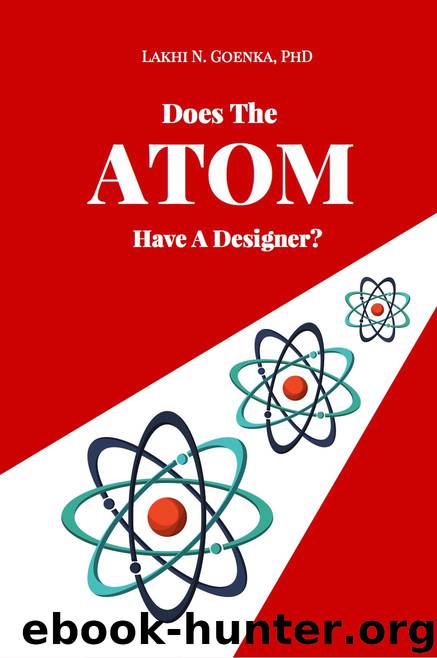Does the Atom Have A Designer? by Goenka Lakhi

Author:Goenka, Lakhi [Goenka, Lakhi]
Language: eng
Format: epub
Publisher: eThermal, LLC
Published: 2013-12-23T16:00:00+00:00
Underlying Mechanisms: The Elephant in the Room
The Standard Model of Physics has been developed over the past 80 years, and can accurately predict many aspects of quantum physics. The Standard Model is a non-abelian gauge theory with the symmetry group U(1)×SU(2)×SU(3) and has a total of twelve gauge bosons: the photon, three weak bosons and eight gluons.
However, Quantum Mechanics has no fundamental understanding of why matter exists as subatomic (quantized) particles in the first place. Or why they have a certain Mass, or why they have properties such as quantized Charge. Or why and how they exhibit both wavelike and particle-like behavior, and other quantum phenomenon such as Quantum Uncertainty and Quantum Superposition.
Instead, Quantum Mechanics begins with these fundamental experimental observations, and quantifies these observations using mathematical equations. For example, Edwin Schroedinger’s Wavefunction, one of the foundational equations of Quantum Mechanics, is not based on any fundamental physics (unlike that describing an acoustic or a water wave that result from pressure and momentum considerations), but is semi-empirical in nature. Schroedinger simply came up with a wave equation that matched experimental observations of wavelike behavior (while conserving momentum and energy) .
Further, much of Physics is based on the underlying symmetry of the Universe (although there some key instances where this symmetry is broken). But there is no fundamental understanding of why the Universe is so beautifully symmetric. Physics once again assumes this is so based on experimental observations that have been repeatedly confirmed.
The Laws of Physics give us the outcome of subatomic particle interactions. However, they give us no fundamental understanding of the underlying mechanisms involved in these interactions.
For example, when we say that a particle such as an Electron has a negative Charge, what it really means that the particle has the ability to emit and to absorb massless Photons that then travel at the speed of Light at a certain frequency and amplitude, and which exhibit wave-particle duality, and to thereby interact with other parties with Charge. Further, the mechanism by which a Photon, which in itself has no Charge, can transmit the electromagnetic force between charged particles remains unclear. This adds to the underlying complexity of the Photon.
The Electron, as it drops from a higher to a lower atomic orbital, emits a Photon. Further, an accelerating Electron emits Photons. The Electron has the ability to convert Mechanical Energy to Electromagnetic Energy. (This applies to all particles with electric Charge.)
Note that all matter consists of particles called Fermions, while forces between particles are mediated through particles called Bosons. Fermions include Electrons and Quarks, while Bosons include Photons and Gluons.
Download
This site does not store any files on its server. We only index and link to content provided by other sites. Please contact the content providers to delete copyright contents if any and email us, we'll remove relevant links or contents immediately.
The Complete Stick Figure Physics Tutorials by Allen Sarah(7135)
Secrets of Antigravity Propulsion: Tesla, UFOs, and Classified Aerospace Technology by Ph.D. Paul A. Laviolette(4974)
Thing Explainer by Randall Munroe(3782)
The River of Consciousness by Oliver Sacks(3414)
The Order of Time by Carlo Rovelli(3072)
How To by Randall Munroe(2911)
I Live in the Future & Here's How It Works by Nick Bilton(2840)
A Brief History of Time by Stephen Hawking(2819)
What If?: Serious Scientific Answers to Absurd Hypothetical Questions by Randall Munroe(2542)
The Great Unknown by Marcus du Sautoy(2532)
Midnight in Chernobyl by Adam Higginbotham(2386)
Blockchain: Ultimate Step By Step Guide To Understanding Blockchain Technology, Bitcoin Creation, and the future of Money (Novice to Expert) by Keizer Söze(2379)
Networks: An Introduction by Newman Mark(2264)
The Meaning of it All by Richard Feynman(2213)
Easy Electronics by Charles Platt(2205)
The Tao of Physics by Fritjof Capra(2163)
Midnight in Chernobyl: The Untold Story of the World's Greatest Nuclear Disaster by Adam Higginbotham(2075)
When by Daniel H Pink(2020)
Introducing Relativity by Bruce Bassett(2018)
